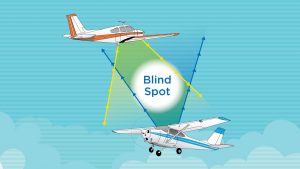Monday Accidents & Lessons Learned: Missing a Mode Change

A B737-800 Captain became distracted while searching for traffic during his approach. Both he and the First Officer missed the FMA mode change indication, which resulted in an altitude deviation in a terminal environment.
From the Captain’s Report:
“Arrival into JFK, weather was CAVU. Captain was Pilot Flying, First Officer was Pilot Monitoring. Planned and briefed the visual Runway13L with the RNAV (RNP) Rwy 13L approach as backup. Approach cleared us direct to ASALT, cross ASALT at 3,000, cleared approach. During the descent, we received several calls for a VFR target at our 10 to 12 o’clock position. We never acquired the traffic visually, but we had him on TCAS. Eventually Approach advised, “Traffic no factor, contact Tower.” On contact with Tower, we were cleared to land. Approaching ASALT, I noticed we were approximately 500 feet below the 3,000 foot crossing altitude. Somewhere during the descent while our attention was on the VFR traffic, the plane dropped out of VNAV PATH, and I didn’t catch it. I disconnected the autopilot and returned to 3,000 feet. Once level, I reengaged VNAV and completed the approach with no further problems.”
From the First Officer’s Report:
“FMA mode changes are insidious. In clear weather, with your head out of the cockpit clearing for traffic in a high density environment, especially at your home field on a familiar approach, it is easy to miss a mode change. This is a good reminder to keep instruments in your cross check on those relatively few great weather days.”
CALLBACK is the award-winning publication and monthly safety newsletter from NASA’s Aviation Safety Reporting System (ASRS). CALLBACK shares reports, such as the one above, that reveal current issues, incidents, and episodes. At times, the reports involve mode awareness, mode selection, and mode expectation problems involving aircraft automation that are frequently experienced by the Mode Monitors and Managers in today’s aviation environment.
We encourage you to use the TapRooT® System to find and fix problems. Attend one of our courses. We offer a basic 2-Day Course and an advanced 5-Day Course. You may also contact us about having a course at your site.



